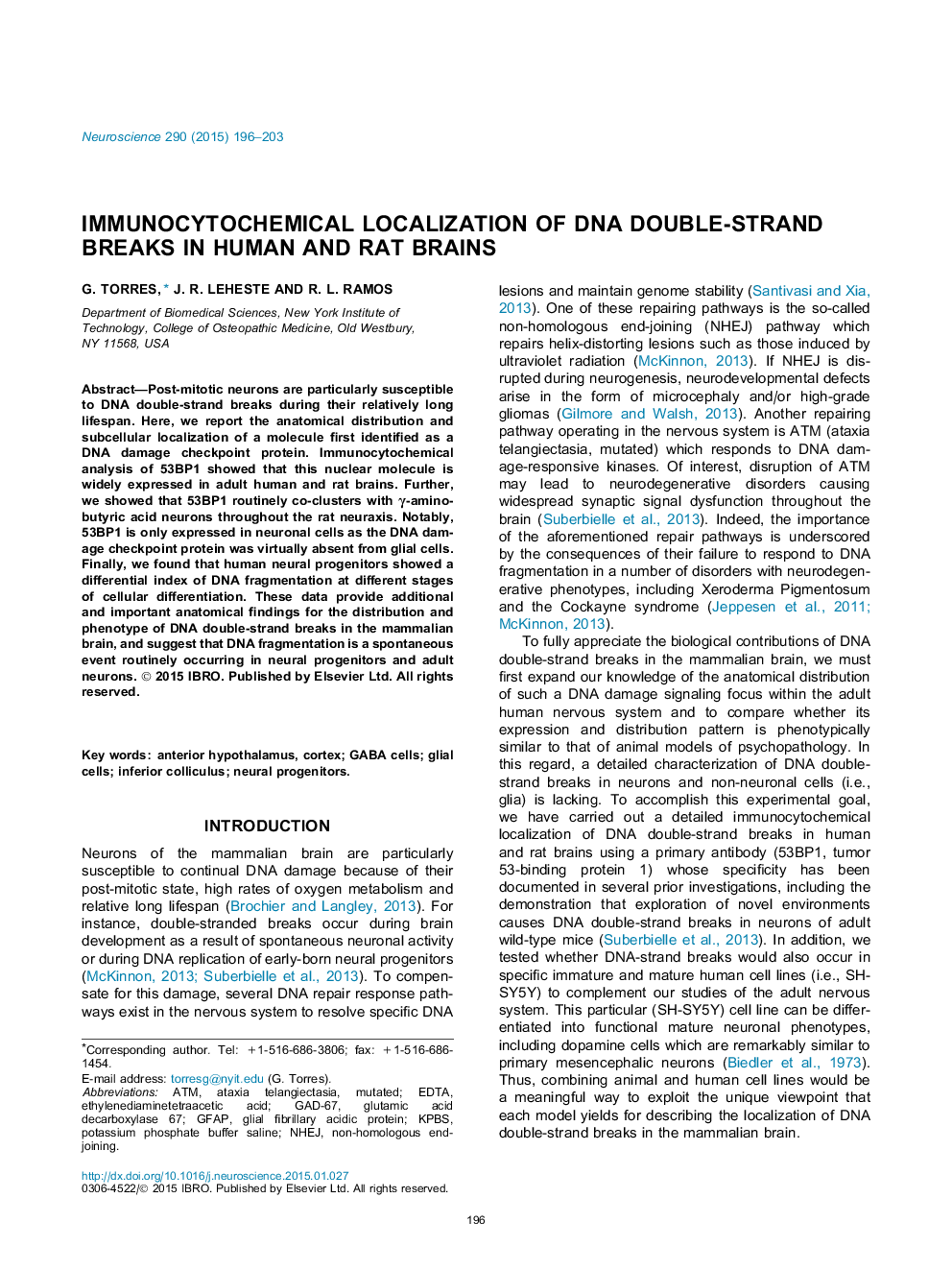| Article ID | Journal | Published Year | Pages | File Type |
|---|---|---|---|---|
| 6272633 | Neuroscience | 2015 | 8 Pages |
â¢Neurons are particularly susceptible to DNA double-strand breaks during their lifespan.â¢A DNA damage checkpoint protein (e.g., 53BP1) was identified and characterized in human and rat brains.â¢Human neural progenitor and fully differentiated neurons were also characterized for the expression of 53BP1 in vitro.â¢DNA double-strand breaks are formed and repaired on a regular basis in the mammalian brain.
Post-mitotic neurons are particularly susceptible to DNA double-strand breaks during their relatively long lifespan. Here, we report the anatomical distribution and subcellular localization of a molecule first identified as a DNA damage checkpoint protein. Immunocytochemical analysis of 53BP1 showed that this nuclear molecule is widely expressed in adult human and rat brains. Further, we showed that 53BP1 routinely co-clusters with γ-aminobutyric acid neurons throughout the rat neuraxis. Notably, 53BP1 is only expressed in neuronal cells as the DNA damage checkpoint protein was virtually absent from glial cells. Finally, we found that human neural progenitors showed a differential index of DNA fragmentation at different stages of cellular differentiation. These data provide additional and important anatomical findings for the distribution and phenotype of DNA double-strand breaks in the mammalian brain, and suggest that DNA fragmentation is a spontaneous event routinely occurring in neural progenitors and adult neurons.
